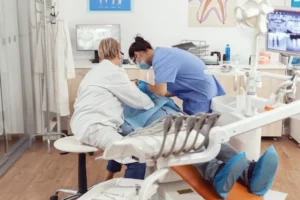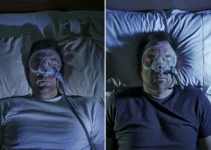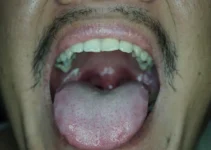Sleep apnea, a serious condition characterized by pauses in breathing during sleep, has significant implications for overall health and well-being. In the realm of dentistry, several effective treatments are available to help manage and alleviate the symptoms of sleep apnea. Dental professionals often recommend custom-fitted oral appliances, which are designed to keep the airway open by repositioning the jaw or tongue during sleep. Additionally, dental interventions can involve addressing structural issues in the mouth or throat that may contribute to sleep apnea. Understanding the link between oral health and sleep apnea is crucial for identifying the best treatment approach tailored to individual patient needs.
Understanding Sleep Apnea
Sleep apnea is a common yet serious sleep disorder where an individual’s breathing repeatedly stops and starts during sleep. This condition can significantly affect quality of life and overall health. Understanding sleep apnea is crucial for early identification and treatment, which can mitigate health risks and improve overall well-being.
There are several types of sleep apnea, with the most common being obstructive sleep apnea (OSA). This form occurs when the throat muscles intermittently relax and block the airway during sleep. Another type is central sleep apnea, which involves the brain failing to send proper signals to the muscles that control breathing. Recognizing and addressing the symptoms is essential for managing the condition effectively.
Treating sleep apnea often requires a multidisciplinary approach, including lifestyle changes, medical interventions, and sometimes surgery. Early diagnosis and management can prevent complications such as heart disease, stroke, and high blood pressure. In the sections below, we will delve deeper into what sleep apnea is, its symptoms, and its causes.
What is Sleep Apnea?
Sleep apnea is a sleep disorder characterized by pauses in breathing or periods of shallow breathing during sleep. Each pause can last from a few seconds to a few minutes and may occur 30 times or more an hour. Obstructive Sleep Apnea (OSA) is the most prevalent type, caused by a blockage of the airway, usually when the soft tissue in the back of the throat collapses during sleep.
Central Sleep Apnea (CSA) is less common and occurs when the brain fails to signal the muscles to breathe due to instability in the respiratory control center. Complex sleep apnea syndrome, also known as treatment-emergent central sleep apnea, is a combination of OSA and CSA, representing a significant challenge in diagnosis and treatment.
The impact of sleep apnea extends beyond disturbed sleep; it can lead to severe health conditions if left untreated. Individuals with sleep apnea often experience reduced quality of life due to chronic fatigue, mood disturbances, and impaired cognitive function. Recognizing and understanding the disorder is the first step towards effective management and treatment.
Symptoms of Sleep Apnea
The symptoms of sleep apnea can vary between individuals and may include both nocturnal and daytime symptoms. Common nocturnal symptoms include:
- Loud snoring
- Episodes of breathing cessation during sleep
- Gasping for air during sleep
- Insomnia or restless sleep
- Frequent awakening to urinate
Daytime symptoms commonly associated with sleep apnea are:
- Excessive daytime sleepiness
- Morning headaches
- Difficulty concentrating
- Mood changes such as depression or irritability
- Sore throat or dry mouth upon waking
Identifying these symptoms early can lead to earlier diagnosis and intervention, improving outcomes and quality of life. Daytime fatigue and sleepiness, in particular, can significantly impair daily functioning and increase the risk of accidents, particularly motor vehicle accidents.
Causes of Sleep Apnea
Several factors can contribute to the development of sleep apnea, with obesity being a primary risk factor. Excess weight can cause fat deposits around the upper airway, which can obstruct breathing. Other physical attributes, such as a narrow airway, large tonsils, or a large neck circumference, can also increase the risk.
Other contributing factors include:
- Family history: Genetics can play a role in the development of sleep apnea, as anatomical traits associated with the condition can be inherited.
- Alcohol and sedative use: These substances relax the muscles of the throat, increasing the likelihood of airway obstruction during sleep.
- Smoking: Smoking can increase inflammation and fluid retention in the upper airway.
- Medical conditions: Conditions such as congestive heart failure, high blood pressure, and type 2 diabetes are linked with higher risk.
In children, the most common cause of obstructive sleep apnea is enlarged tonsils or adenoids. Recognizing the underlying causes of sleep apnea can aid in developing targeted treatments and interventions, potentially reducing the severity of the condition and improving patient outcomes.
Understanding sleep apnea is the first step towards better health. For more in-depth information on this and related topics, be sure to explore our other articles.
Dental Treatments for Sleep Apnea
Sleep apnea is a serious sleep disorder that occurs when a person’s breathing is interrupted during sleep. Millions of people worldwide suffer from this condition, which can lead to significant health problems such as cardiovascular diseases, stroke, and diabetes. Fortunately, dental treatments have shown promise in managing sleep apnea symptoms and improving patients’ quality of life.
One of the primary approaches to treating sleep apnea from a dental perspective is the use of oral appliances. Additionally, Continuous Positive Airway Pressure (CPAP) therapy is another widely recognized method, and for more severe cases, surgical options may be considered. Each treatment has its advantages and is suited to different levels of severity and patient needs.
Oral Appliances
Oral appliances are custom-made devices designed to keep the airway open during sleep. They work by repositioning the lower jaw, tongue, and soft palate to prevent airway obstruction. According to research, these devices can significantly reduce the number of apnea and hypopnea events per hour, especially in patients with mild to moderate obstructive sleep apnea (OSA).
The effectiveness of oral appliances can be attributed to their ability to enhance breathing and reduce snoring. Patient compliance is generally high because these devices are portable, non-invasive, and easy to wear. However, it’s crucial to have the appliance fitted by a dental professional to ensure an optimal fit and maximize the benefits.
Common side effects of using oral appliances include jaw discomfort, dry mouth, and excessive salivation. Regular follow-up visits to the dentist are essential for monitoring the appliance’s fit and making necessary adjustments. Despite these minor inconveniences, many patients find significant relief from their sleep apnea symptoms and enjoy a better night’s sleep.
Continuous Positive Airway Pressure (CPAP) Therapy
CPAP therapy is the most commonly prescribed treatment for sleep apnea. It involves the use of a machine that delivers a constant stream of air through a mask, keeping the airway open and preventing pauses in breathing. While not exclusively a dental treatment, CPAP can be complemented with oral health strategies to improve patient outcomes.
Studies have shown that CPAP therapy can dramatically reduce the symptoms of sleep apnea and improve overall health. Patients typically experience fewer episodes of interrupted breathing, decreased daytime sleepiness, and a lower risk of developing related health conditions. Despite its effectiveness, some patients find the equipment cumbersome and uncomfortable, leading to poor adherence. To address these issues, dental professionals can work in tandem with sleep specialists to customize mask fittings and explore alternative positioning strategies. In some cases, combining CPAP with an oral appliance may enhance comfort and compliance, providing a more comprehensive solution to managing sleep apnea.
Surgical Options
Surgical treatment may be necessary for patients with severe sleep apnea or when other treatments have been ineffective. Several surgical procedures can help alleviate the condition by removing or altering tissues that obstruct the airway. These options include uvulopalatopharyngoplasty (UPPP), genioglossus advancement, and maxillomandibular advancement (MMA).
UPPP involves removing excess tissue from the throat, including the uvula and parts of the soft palate. This procedure can widen the airway and reduce the likelihood of obstructions during sleep. Genioglossus advancement repositions the tongue muscle attachment forward, preventing it from collapsing backward and blocking the airway.
Maxillomandibular advancement is a more complex procedure that repositions both the upper and lower jaw to enlarge the airway space. This surgery is highly effective but typically reserved for severe cases due to its invasive nature and longer recovery time.
While surgical options can provide significant and long-lasting relief from sleep apnea, they come with inherent risks and potential complications. It’s vital for patients to have thorough consultations with their healthcare providers to weigh the benefits and risks and determine the most suitable treatment plan.
For more information on sleep apnea treatments and related dental health topics, explore our other articles and stay informed about the latest advancements in dental care. Your path to better sleep and health starts with the right knowledge and professional guidance.
Choosing the Right Treatment
When it comes to dental health, choosing the right treatment can make a significant difference in both short-term and long-term outcomes. It is essential to consider a multitude of factors such as the condition of your teeth, gums, and overall oral health. Consulting with a specialized dentist can provide you with a customized plan tailored to your specific needs. Moreover, certain lifestyle changes and consistent monitoring and follow-up care play pivotal roles in the success of any dental treatment. Understanding the myriad of treatment options and the necessary steps for successful outcomes can empower patients to make informed decisions about their dental health. The role of a dentist is not just to provide treatments but to educate and guide patients through this complex process. Let’s delve into the critical aspects that influence the selection of the right dental treatment.
Consulting with a Dentist
The first step in choosing the right treatment is a comprehensive consultation with a qualified dentist. During this initial meeting, the dentist will conduct a thorough examination of your oral health. This will likely include X-rays, scans, and perhaps even impressions of your teeth. Advanced diagnostic tools enable the dentist to get a complete picture of your dental situation.
Consulting with a dentist also involves discussing your medical history, lifestyle, and treatment goals. The dentist will consider factors such as any pre-existing conditions, allergies, or medications that could affect treatment options. Open communication is crucial during this consultation to ensure that all your concerns are addressed and to establish a clear understanding of the potential outcomes and risks involved.
Furthermore, a consultation provides an opportunity for the dentist to educate you about the various treatment options available. They can explain the benefits and drawbacks of each option, helping you to make an informed decision. This personalized approach ensures that the treatment plan aligns with your expectations and needs.
Lifestyle Changes
Implementing lifestyle changes can have a tremendous impact on the success of your dental treatment. For instance, smoking has been proven to significantly hinder oral health and can complicate healing processes. Similarly, a diet high in sugar and acidic foods can exacerbate dental problems, leading to further issues down the line.
Adopting a balanced diet rich in vitamins and minerals can support not just your overall health but your dental health as well. Foods high in calcium, such as dairy products, leafy greens, and nuts, can strengthen your teeth. Drinking plenty of water and reducing the intake of sugary and acidic beverages is also beneficial.
In addition to dietary changes, maintaining a strict oral hygiene routine is crucial. Brushing twice a day, flossing regularly, and using an antiseptic mouthwash can help to prevent plaque buildup and reduce the risk of gum disease. These habits should be established well before beginning any dental treatment to ensure the best possible outcomes.
Monitoring and Follow-up Care
Once the dental treatment has been completed, monitoring and follow-up care are essential to ensure its success and longevity. Regular check-ups allow the dentist to monitor the progress of your recovery and to address any issues that might arise promptly. These visits are an opportunity to make any necessary adjustments to your treatment plan and to reinforce good oral hygiene practices.
Frequent monitoring also helps in the early detection of potential complications. Problems such as infections, gum recession, or dental implant failure are best managed when identified early. Routine follow-ups provide a proactive approach to dental care, minimizing the risks of complications and ensuring the longevity of the treatment.
In addition to professional check-ups, patients should be vigilant about self-monitoring their oral health at home. Paying attention to any changes in your mouth, such as persistent pain, swelling, or unusual sensations, can help catch problems early. Keeping a log of these observations and discussing them with your dentist during follow-up appointments can significantly contribute to the success of your treatment.
For more information on dental health and treatment options, be sure to check out our other articles. Expanding your knowledge can help you make more informed decisions and achieve the best possible outcomes for your oral health.
Sleep Apnea and Dentistry: Effective Treatments
Managing sleep apnea often transcends the traditional medical routes, with several dental solutions effectively mitigating symptoms. Here are a couple of common queries about how dentistry can aid in the treatment of sleep apnea.
How can dentists help in treating sleep apnea?
Dentists can provide specialized oral appliances, like mandibular advancement devices, which gently shift the lower jaw forward. This slight adjustment can help maintain an open airway throughout the night, significantly reducing sleep apnea symptoms. Additionally, dentists can craft custom-fit devices for greater comfort compared to over-the-counter options.
Are there any side effects associated with dental devices for sleep apnea?
While dental devices are generally safe, some users may experience minor side effects such as jaw discomfort, excessive salivation, or a temporary change in bite alignment. Most of these issues resolve within a short period as the user acclimates to the device. Regular follow-ups with a dentist ensure the device is effective and minimizes any adverse effects.

My name is Salman Kapa, a 73-year-old expert in bone regeneration and dental implantology. With decades of experience in the field, I am dedicated to advancing our understanding of oral health and hygiene. Through my research and writing, I aim to contribute to the development of innovative solutions in dental care.




